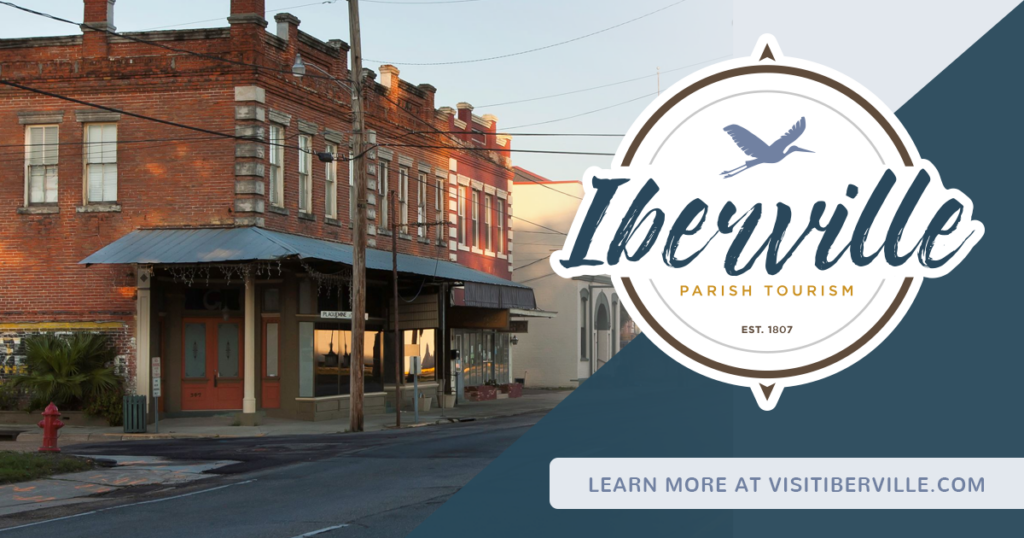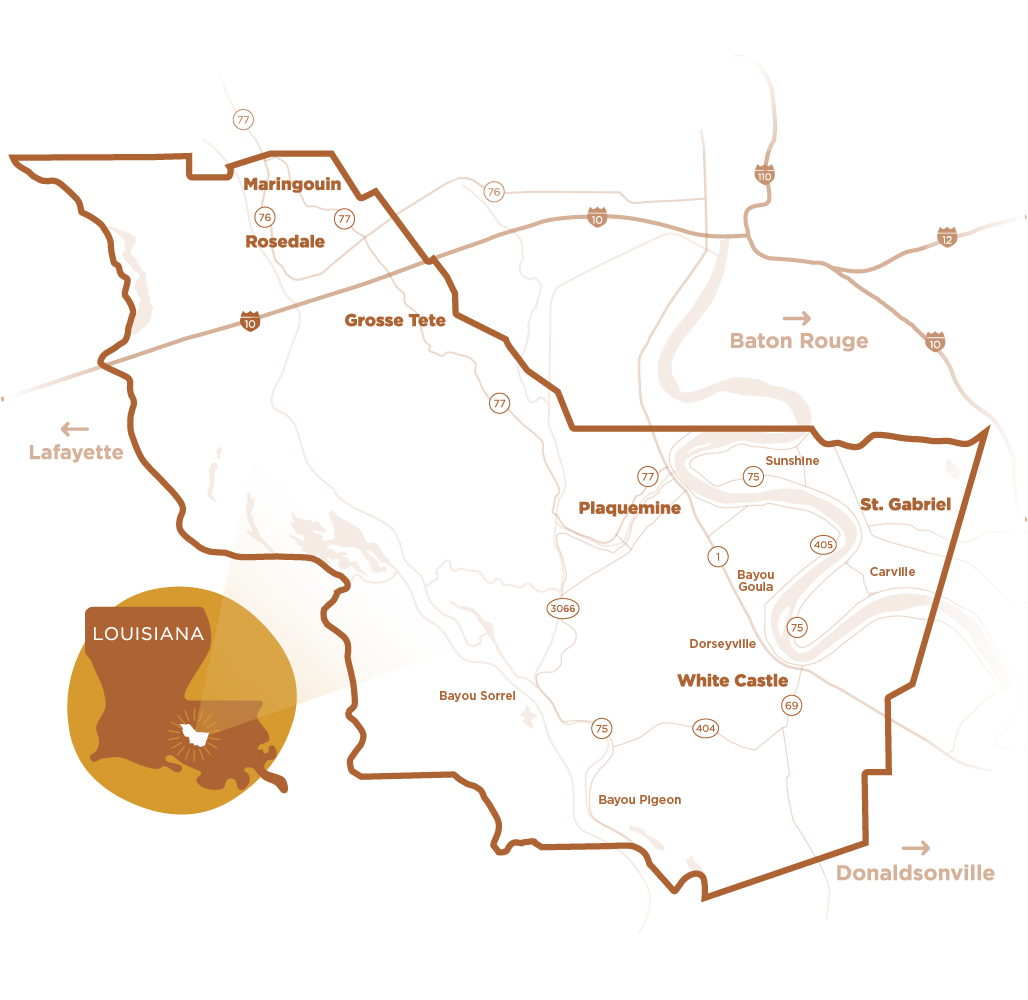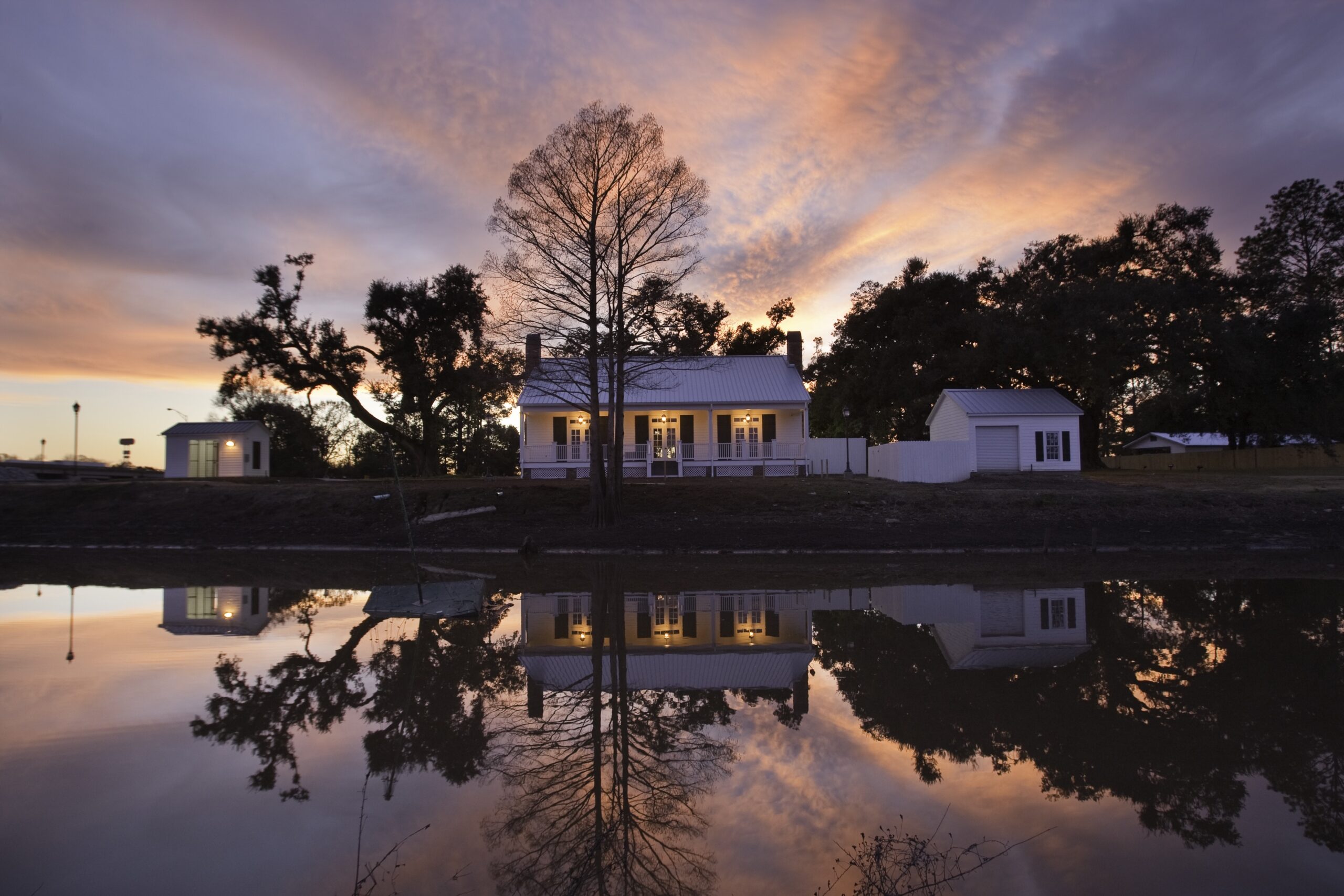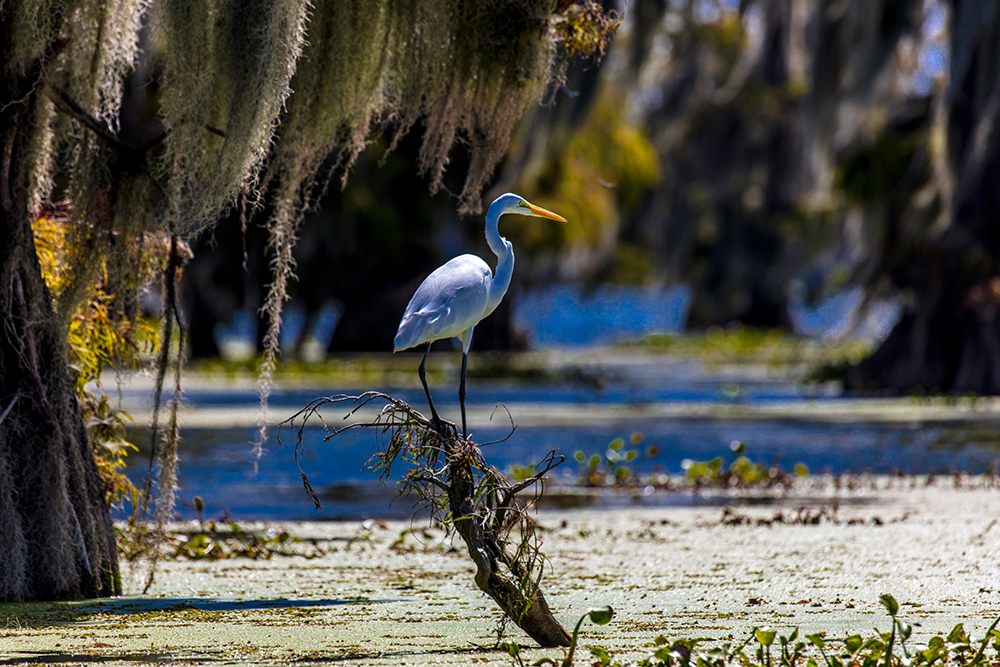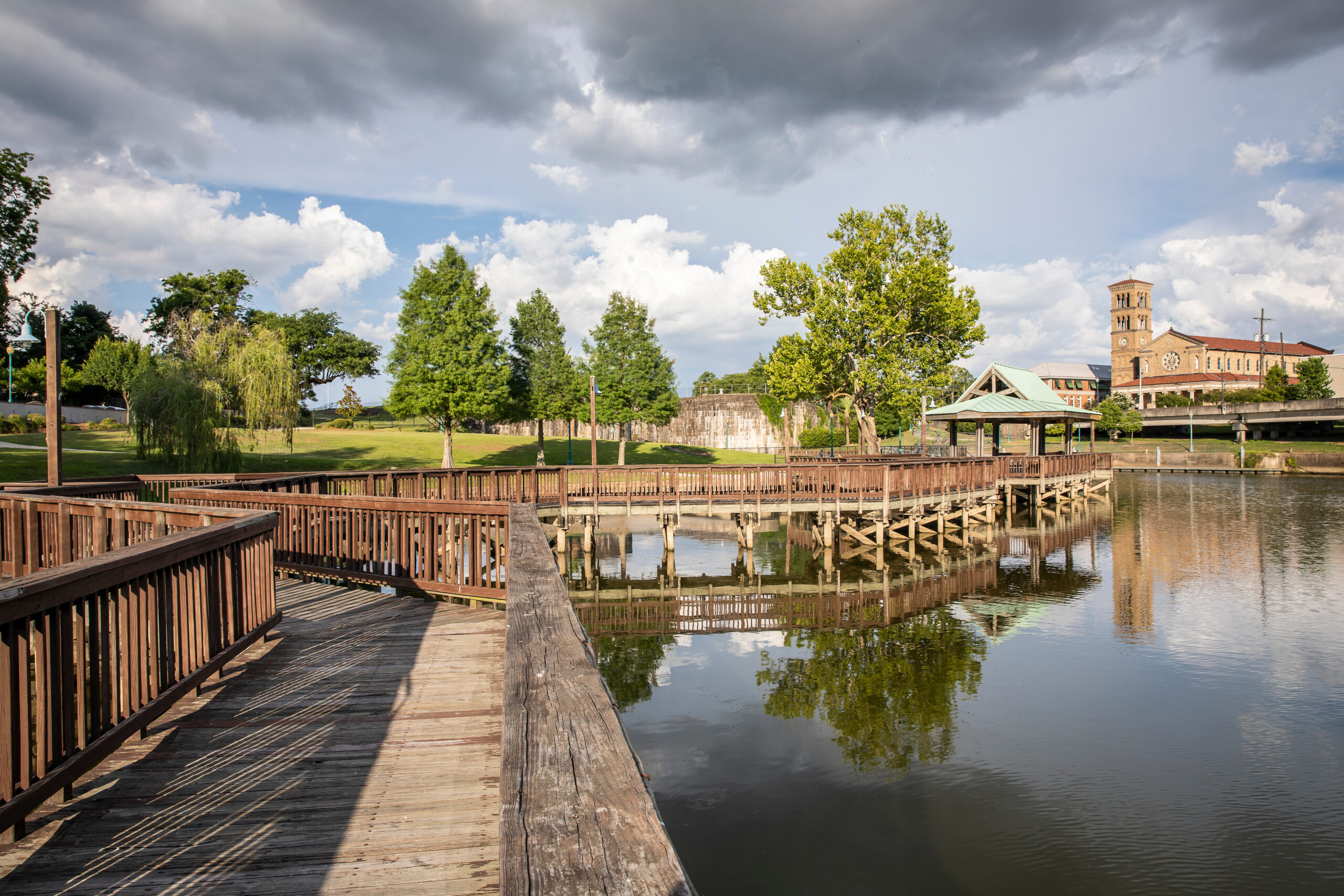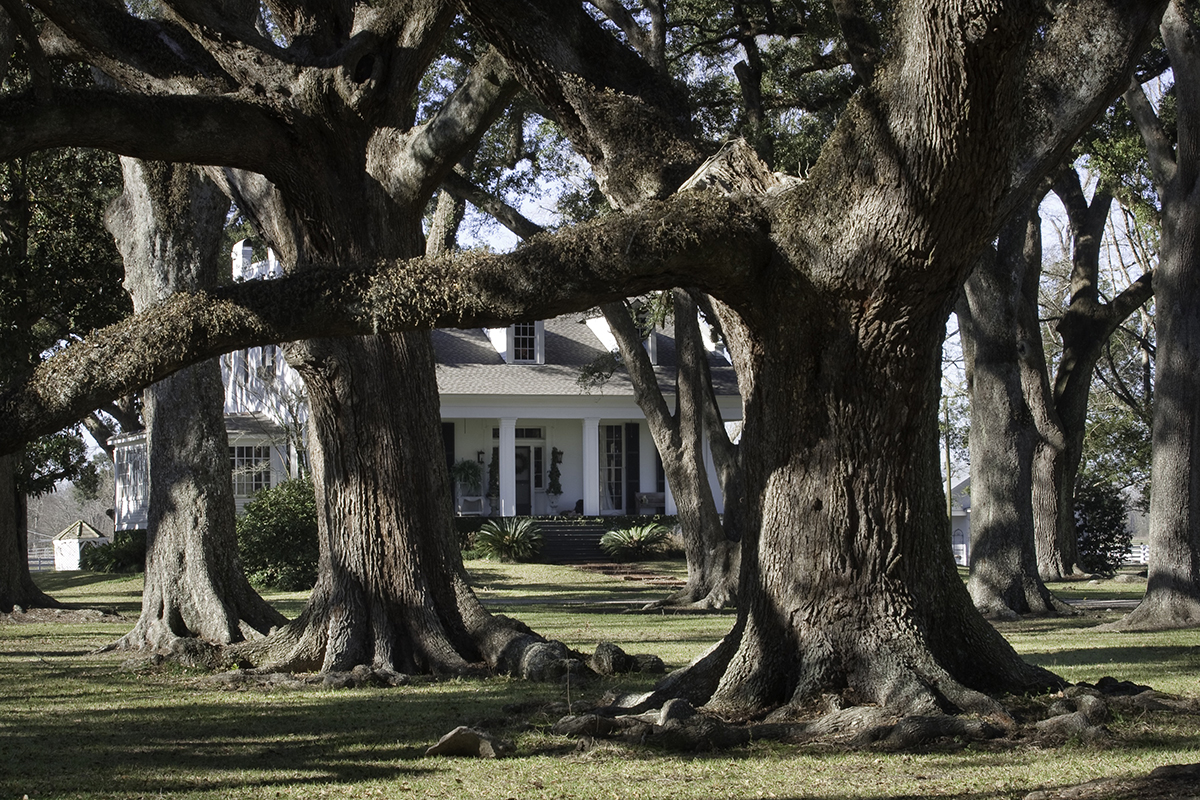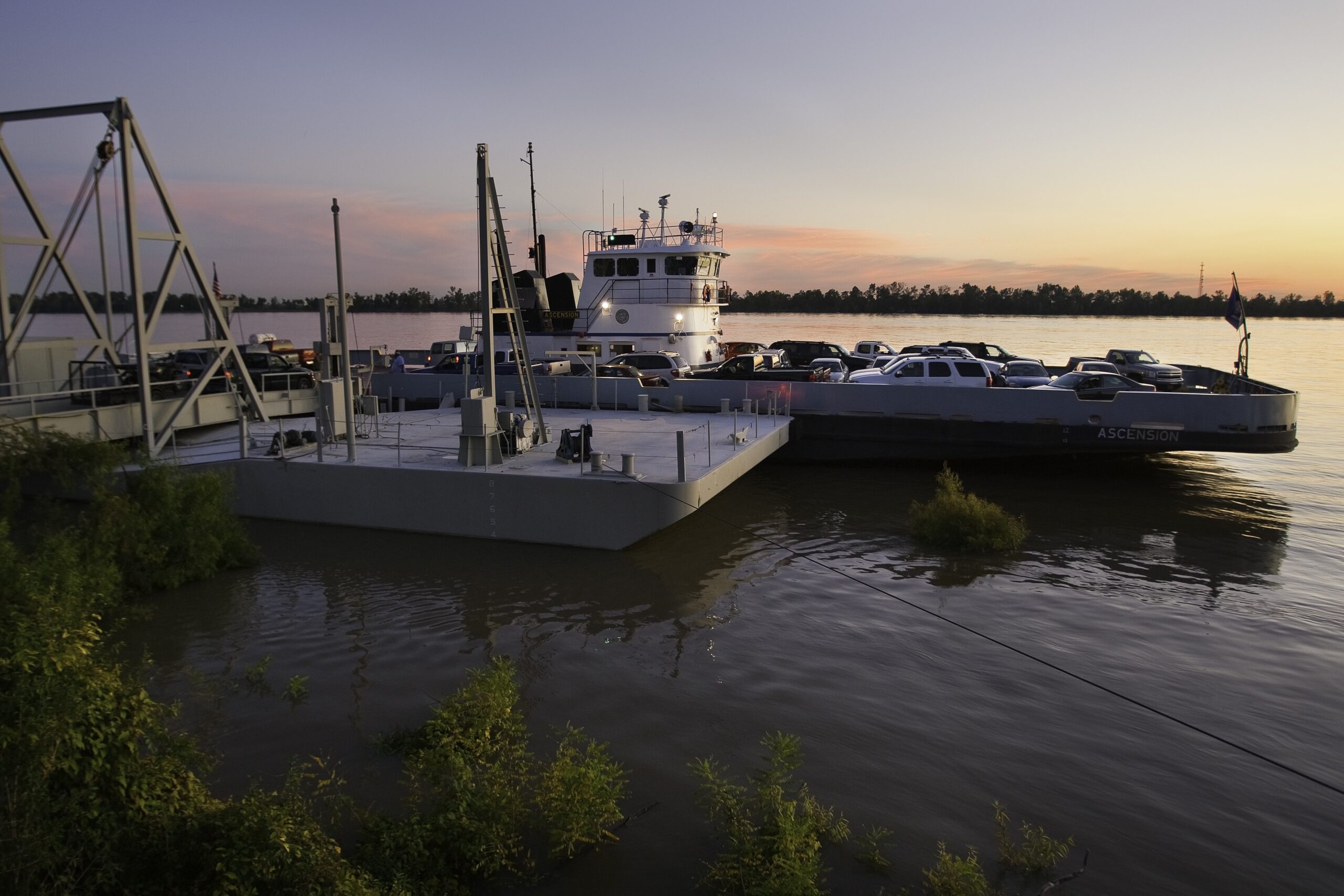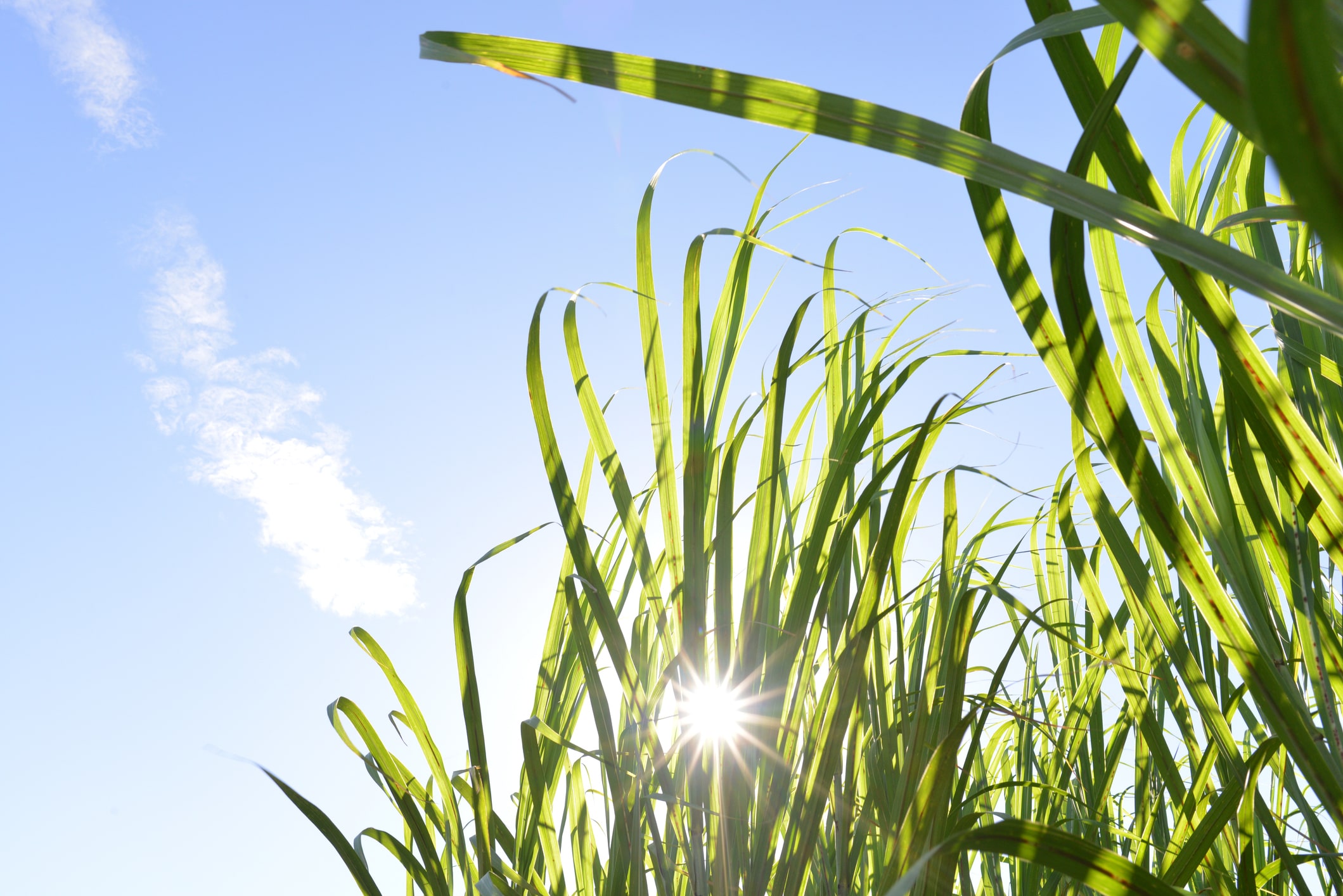Our Parish
A parish rich in history, Iberville has six municipalities. Plaquemine, the largest community, serves as the parish seat, St. Gabriel, White Castle, Rosedale, Grosse Tete and Maringouin – plus several smaller localities.
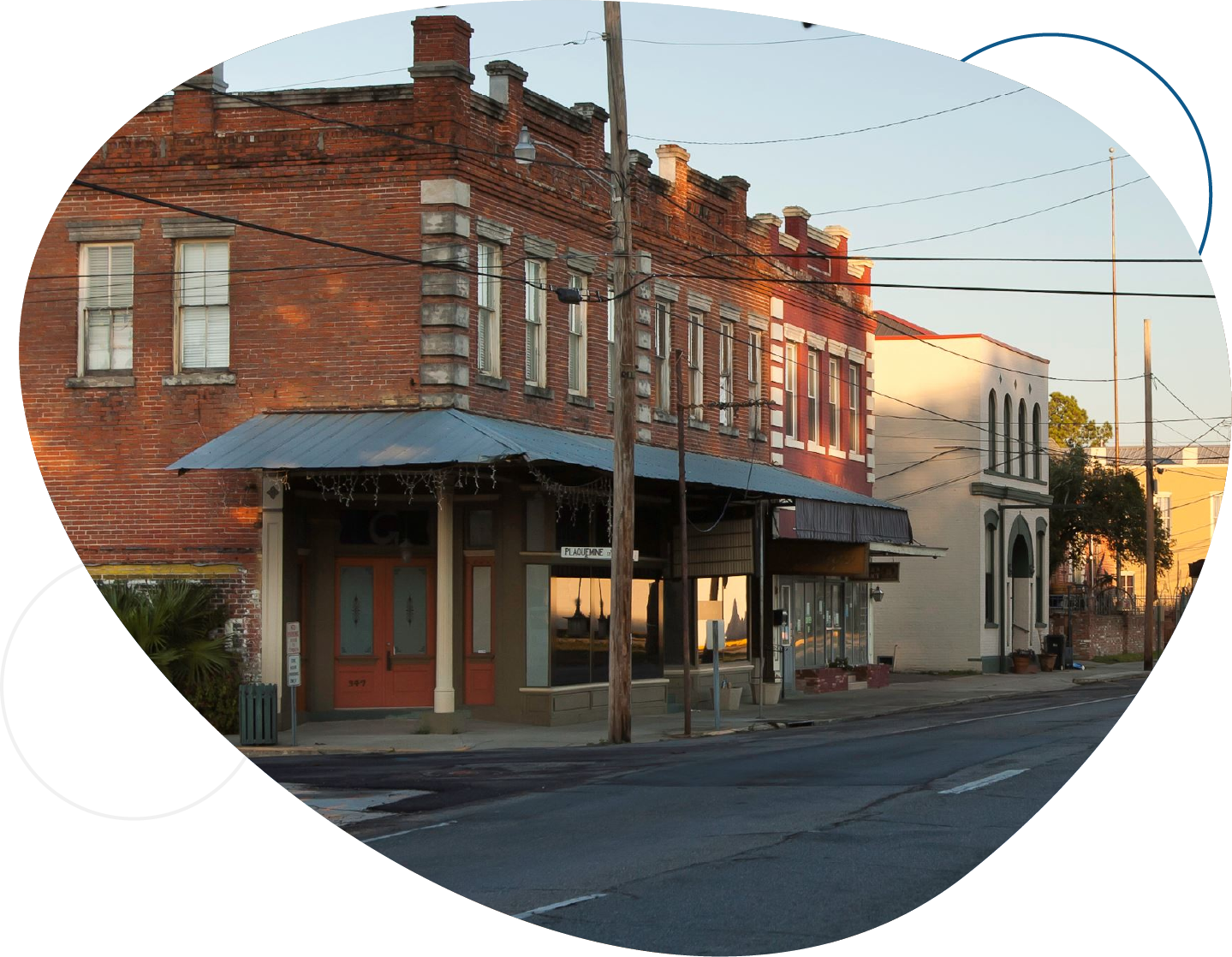
History of Iberville
Iberville was “discovered” by French explorer Pierre LeMoyne, Sieur d’Iberville in 1699, but its rich delta soil and many waterways had been discovered by Indian tribes long before Iberville ever set foot here. While it was initially an agricultural area, Iberville has changed through the centuries to accommodate the changing times. The parish has always had plenty of sugarcane and soybean fields, but through the years the hardwood timber industry, river commerce and now industrial development have been essential to a thriving parish economy.
From the 1800s until the mid-1900s, Louisiana produced more sugar than any other state in the nation, and Iberville, as the state’s leading sugarcane producer, drew the name “Sweet Iberville.” By the late 1800s Bayou Plaquemine, running through the heart of Iberville, became the most common route from the Mississippi River into the interior of Louisiana, and this water traffic brought a boom in the parish’s timber and sawmill industries and a variety of commercial establishments catering to travelers. It also resulted in the construction of the historic Plaquemine Lock. With the agricultural, timber, sawmill, and water commerce industries powering the economy, Iberville prospered into the 1960s, when the Lock was finally closed, replaced by a bigger structure closer to Baton Rouge. But by this time the chemical industry had realized the many advantages that Iberville offered with its access to the Mississippi River, interstate travel, electrical power and hard-working people. Today, the chemical and agriculture industries power the economy, and exist in harmony with the tourism industry.
To learn more about our parish government, visit ibervilleparish.com
Grosse Tete
The Village of Grosse Tete is a beautiful community of majestic live oaks and green pastures which meander along the bayou for which it’s named. This quaint community is in Northern Iberville off Interstate 10, just 20 miles west of Baton Rouge and is home to our Iberville Visitors Center. The Village of Grosse Tete offers parks and trails, providing a serene retreat and gateway for discovering the natural beauty of the region.
Maringouin
Maringouin is the largest community of North Iberville and is located at the tip of the parish. Fishing and paddling opportunities are abundant and easily accessible through nearby Bayou Grosse Tete and the Atchafalaya Basin. Outdoor enthusiasts will also find Maringouin to be a gateway to The Sherburne Wildlife Management Area (South Farm), a premier destination for birdwatching that boasts an impressive variety of bird species. Whether you're seeking adventure on the water or a chance to observe wildlife, Maringouin is a hidden gem in the region.
Plaquemine
Welcome to the “City of Hospitality” and the seat of Iberville Parish Government. Plaquemine offers charming sights to see, things to do, and places to dine. It’s home to several museums and award-winning parks. With over 100 buildings listed on the National Register of Historic Places, it’s an architectural lover’s dream. Heading south from Plaquemine along Louisiana Highway 75, you'll discover the authentic communities of Bayou Sorrel and Bayou Pigeon. Known their unique natural landscape and abundance of waterways, they're ideal locations for outdoor adventures.
Rosedale
Rosedale is a quiet, rural community in Northern Iberville. Located at the intersection of La. Hwy. 76 and La. Hwy. 77, the town is surrounded by beautiful open fields, cropland, and winding highways that trace the path of Bayou Grosse Tete. Rosedale is home to several of Louisiana's most historic homes, as well as the majestic Church of The Nativity, a small but unique Gothic Revival frame church rich in history and listed on the National Register of Historic Places. Visitors driving through the area can enjoy a scenic journey while taking in these historic landmarks.
St. Gabriel
St. Gabriel is a town rich in history, with deep roots dating back centuries. Located across the Mississippi River in East Iberville, it encompasses the communities of Sunshine and Carville. The area is home to the historic St. Gabriel Catholic Church, which was built by Acadian settlers in the 1770’s, and is the oldest Catholic Church in Louisiana. Minutes away, Istrouma Eatery C Brewery provides a sweet Iberville experience in the heart of Sugar Farms, the perfect escape from the bustle of Baton Rouge. Travel the Great River Road to Carville, where the Hansen’s Disease Museum chronicles the century-long story of leprosy within the community and across the nation. The sites of St. Gabriel demonstrate a deep cultural heritage and offer visitors a glimpse of the unique and often overlooked stories of Iberville Parish.
White Castle
White Castle is one of the many small towns along the Great River Road, two highways that follow the Mississippi River. Boasting the prestigious All American Road designation, this national scenic byway features some of Louisiana's most iconic historic sites, including the quaint Madonna Chapel, which was recognized by Ripley’s as the world’s smallest church. Located in southeastern Iberville Parish, White Castle, along with its neighboring communities of Dorseyville and Bayou Goula, offer visitors a rare opportunity to experience Louisiana's rich history through the careful preservation and restoration of these unique cultural sites.

